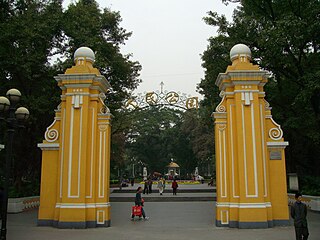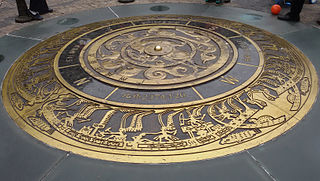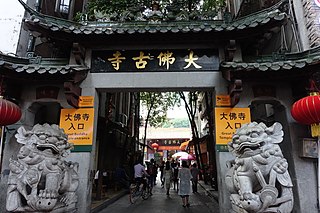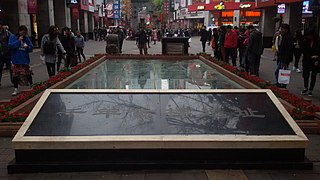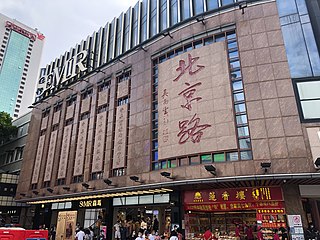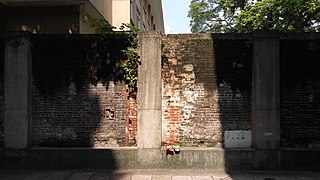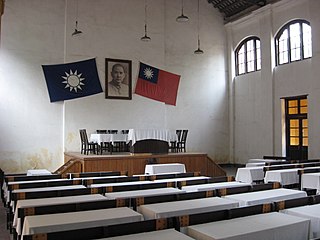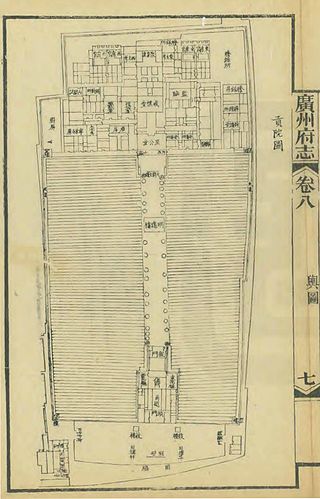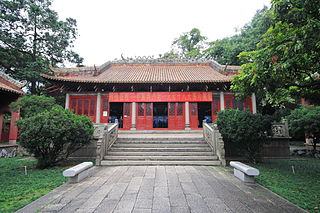Self-guided Sightseeing Tour #6 in Guangzhou, China
Legend
Guided Free Walking Tours
Book free guided walking tours in Guangzhou.
Guided Sightseeing Tours
Book guided sightseeing tours and activities in Guangzhou.
Tour Facts
5.1 km
167 m
Experience Guangzhou in China in a whole new way with our free self-guided sightseeing tour. This site not only offers you practical information and insider tips, but also a rich variety of activities and sights you shouldn't miss. Whether you love art and culture, want to explore historical sites or simply want to experience the vibrant atmosphere of a lively city - you'll find everything you need for your personal adventure here.
Activities in GuangzhouIndividual Sights in GuangzhouSight 1: People's Park
Get Ticket*People's Park is an urban public park in Yuexiu District in central Guangzhou, capital of Guangdong province in south China. Established in 1921, it is the first public park in the city, built on the site that had been the location of successive regional governments since the Sui dynasty. Due to its central location, it is colloquially called Central Park (中央公园).
Sight 2: 广州原点
The Guangzhou City Origin Logo is located in the South Square of People's Park, Zhongshan 5th Road, Yuexiu District, Guangzhou, China.
Sight 3: Lingnan Finance Museum
The Lingnan Museum of Finance is a museum located in Guangzhou, Guangdong Province.
Sight 4: Big Buddha Temple
The Dafo Temple is a Buddhist temple in Guangzhou, Guangdong, China. Located in Yuexiu District, Dafo Temple is a grand temple with a history of more than one thousand years and was built by Emperor Liu Yan in the Southern Han dynasty (917–971). It has been praised as one of the "Five Largest Temples of Guangzhou" in history. Later it was destroyed and rebuilt many times. In the late Ming dynasty, the temple was declining day by day and was devastated by the war while Shang Kexi and Geng Jimao conquered Guangdong in 1649. During the reign of the Kangxi Emperor in 1663, the temple was rebuilt and expanded by Shang Kexi continuously. According to the national policy of free religious belief, the temple was approved by the Guangzhou Municipal People's Government to be restored as a Buddhist temple in 1981. Then Master Guangming, vice-president of the Guangzhou Buddhist Association, served as abbot; he tried to revitalize Dafo Temple and restore the style of the large temple. On August 9, 1993, Dafo Temple was put on the list as a Municipality Protected Historic Site by the Guangzhou Municipal People's Government.
Sight 5: 千年古楼遗址
The site of the thousand-year-old building is a site in Guangzhou City, Guangdong Province, China, which is located at the pedestrian street of Beijing Road in Yuexiu District, starting from the intersection of Huifu East Road in the south and going north to the junction of Zhongshan 5th Road and Zhongshan 4th Road. This ancient road was first discovered by the archaeological team in Guangzhou in 2002 and reaffirmed in December 2008 by the Guangzhou Municipal People's Government as a municipal-level cultural relics protection unit.
Sight 6: Beijing Road Pedestrian Street
Beijing Road is a street integrating culture, entertainment and commerce in Yuexiu District, Guangzhou City, Guangdong Province, China, and is the most prosperous commercial center in the history of Guangzhou, with an average daily flow of about 350,000 people. Beijing Road stretches from Guangwei Road in the north to Yanjiang Middle Road in the south, with a total length of more than 1,500 meters.
Sight 7: 10,000 Tree Cottage
Located at No. 3, Changxingli, Zhongshan 4th Road, Guangzhou, China, the site of Wanmu Thatched Cottage is a blue brick ancestral hall style building with three rooms, three entrances, two wells and a hard hilltop, with an area of 663 square meters. Founded in the ninth year of Jiaqing in the Qing Dynasty (1804), it was originally the residence of the children of the Qiu family in Guangdong Province to take the examination in the provincial capital, and was originally called the Qiu family library, so the nearby neighborhood is commonly called the Qiu family ancestral hall. In the late Qing Dynasty, Kang Youwei founded a private school here.
Sight 8: 龙虎墙
The Dragon and Tiger Wall is a centuries-old wall in Guangzhou, Guangdong Province, China, and a wall to the west of the Zhongshan Library, where the former Guangdong Gongyuan is located. In October 2005, it was listed as a cultural relic by the Guangzhou Municipal People's Government, and in August 2015, it was officially listed as a cultural relics protection unit in Guangzhou.
Sight 9: Site of The 1st National Congress of Kuomintang of China
For the first time of the National Congress of the Chinese Kuomintang, the former National Congress was located in the auditorium of the bell tower on the east side of the East Zhongshan Library of Civilization Road, Yuexiu District, Yuexiu District, Guangzhou. It is a national key cultural relics protection unit. The first National Congress of the Chinese Kuomintang was held in the auditorium of the bell tower from January 20th to 30th, 1924. The auditorium has now resumed the original state of the conference. On the front podium, there are portraits of Sun Yat -sen. The left side of the portrait is the Chinese Kuomintang party flag and the Republic of China flag on the right.
Sight 10: Tungping daa ap
Dongping Dazhu is a Qing Dynasty building in Yuexiu, Guangzhou, the second largest pawnshop in Guangzhou, No. 1, Zhongshan 4th Road, which was later idle and converted into a pawn museum in 2010.
Sight 11: 明远楼
Guangdong Gongyuan is the place where the imperial examination township examination was held at the provincial level in Guangdong in the feudal era of China, was built in the Southern Song Dynasty, and was relocated many times in history, the 23rd year of the Kangxi Dynasty of the Qing Dynasty (1684) was located in the southeast corner of the inner city of Guangzhou, Chengenli, that is, the east end of Wenming Road, Guangzhou City, Guangdong Province, China, and its scope includes the old hall of the Guangdong Provincial Museum, the east of the Wenming Road Headquarters of the Zhongshan Library of Guangdong Province and the Guangdong Experimental Middle School. In the Qing Dynasty, the Guangdong Tribute Courtyard was called the four major tribute courtyards in China together with the Shuntian Tribute Courtyard, the Jiangnan Tribute Courtyard and the Henan Tribute Courtyard, and now only the Dragon and Tiger Wall and the Mingyuan Building remain.
Sight 12: Peasant Movement Institute
The Peasant Movement Training Institute or Peasant Training School was a school in Guangzhou, China, operated from 1923 to 1926 during the First United Front between the Nationalists and Communists. It was located in a former Confucian temple built in the 14th century. The site now houses a museum to Guangzhou's revolutionary past.
Share
How likely are you to recommend us?
Disclaimer Please be aware of your surroundings and do not enter private property. We are not liable for any damages that occur during the tours.
GPX-Download For navigation apps and GPS devices you can download the tour as a GPX file.
